
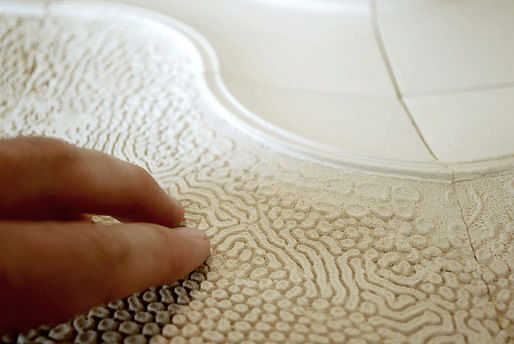
RIBA this week revealed the winners of the President's Awards for Research, a program established in 2006 to reward and encourage research in the fields of architecture and the built environment.
From the award winners in the four categories Climate Change, Cities and Community, Design and Technical, and History and Theory, the jury selected the work "Probiotic Design" by Richard Beckett from the Bartlett School of Architecture, University College London as the recipient of the 2020 RIBA President's Medal for Research.
"The RIBA President’s Research Medal winner, Probiotic Design, is an impressive, unique, and innovative approach to creating healthy buildings," said RIBA President Alan Jones. "Research can be found across many areas of practice and business, academia, institutes, and disciplines, and it’s crucial that we continue to celebrate and support the important role research has in our futures."
President's Medal for Research winner and Design and Technical Award winner: Richard Beckett, University College London for "Probiotic Design"
Project excerpt: "In response to advances in medical fields that now understand the integral role that bacteria play towards human health, this research proposes a novel probiotic design approach towards designing healthy buildings in relation to beneficial microbes. This research fundamentally challenges modern approaches to healthy buildings that assume fewer microbes as the default healthy condition. Human attempts to eradicate all microbial presence from buildings and cities have resulted in built environments completely degraded of the diverse environmental microbes from soils and plants that are integral to our health. Evidence suggests that separation of the human from the non-human has gone too far and that missing microbes are playing a role in the emergence of chronic and autoimmune illnesses observed in developed cities. Probiotic design builds on the contemporary understanding of the microbiome and the need for reintroducing environmental microbial diversity into buildings. The research uses an interdisciplinary approach between microbiology and architecture which aims to develop living materials embedded with beneficial bacteria for buildings to directly shape the indoor microbiome towards a healthier microbial condition. It explores this through a range of scales from the micro scale of the material and microbe up the macro scale of indoor environment and the body. This approach utilises a mix of in vitro and in silico methodologies to explore the design, fabrication and survival of living probiotic materials which are then scaled up to the building scale as a series of probiotic tile surfaces and installed in a test space to monitor their effect on the indoor microbiome. The research demonstrates evidence of a successful methodology for integrating viable bacteria into ceramic and concrete materials which are then proved to inhibit the growth of pathogens and in their ability to directly increase environmental microbial presence in the indoor microbiome of the test space." — Read more

Climate Change Award winner: Louisa Bowles, Hawkins\Brown; Jake Attwood-Harris; Raheela Khan-Fitzgerald; Ben Robinson for "The Hawkins\Brown Emission Reduction Tool: providing a data visualisation tool to enable architects to make informed decisions on their projects’ carbon emissions"
Project excerpt: "The speed and severity of climate change is now globally accepted, signalled by the Paris Agreement in 2015. In light of the UK Green Building Council (UKGBC) stating that the built environment accounts for 40% of total carbon emissions, the RIBA has set ambitious 2030 targets for buildings in the UK to reach Net Zero. Net Zero currently only refers to the operational energy over a building’s lifetime. However, Whole Life Carbon and embodied carbon has historically suffered from a lack of understanding and measurement, largely due to the specialist nature of the field. This paper summarises the multi-phase development of a Revit and web-based carbon data visualisation tool, which started in 2012 with development ongoing. The tool helps architects understand the carbon emissions associated with their designs by adopting clear, graphic representations of their impact. It automates embodied carbon measurements from the BIM model and shows the balance of this against operational energy. It distinguishes itself from the other tools available on the market by being designed for architects, being visual and quick to use. The aim has been to enable significant carbon savings at the earliest design stages, when the most impact can be made. The v1 tool which focuses on embodied carbon visualisation has been disseminated widely: available free of charge, it has been downloaded 572 times by 237 architecture and design professionals as well as 48 students from 23 different universities. The outcome of this body of research has also made a significant contribution to the LETI Embodied Carbon Primer and the Climate Emergency Design Guide, which has been download 4,657 and 12,376 times respectively. This, in turn, impacted the Greater London Authority’s Whole Life-Cycle Carbon Assessments guidance as part of the emerging London Plan, which is currently out for consultation." — Read more
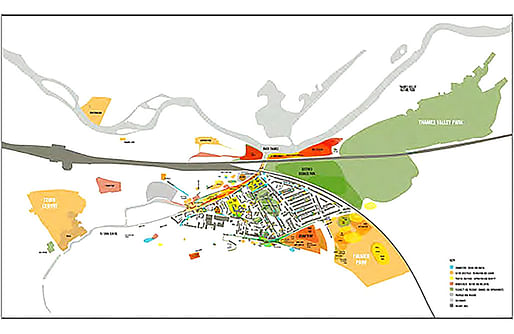
Cities and Community Award winner: Eli Hatleskog, University of Bristol and University of the Arts London; Flora Samuel, University of Reading for "Mapping social values"
Project excerpt: "Social value is high on policy agendas in the UK but there is little agreement on the definition of social value in the context of the built environment or on how the gathering of social value data might be spatialised. This document gives an account of a research project which developed a pragmatic methodology for collecting social value data with local communities. The research explored how practitioners working in the urban environment can, through the co-design of maps with communities, capture and share attributes of a place which typically remain undervalued or hidden. Through a novel asset-based spatial approach to social value the project demonstrated the agency of mapping methods which can generate co-produced urban knowledge, develop capacity and make arguments for value-responsive improvements and development. Mapmaking supported negotiations across different points of view and contested interests and the research project created and tested methods for inclusive architectural research which included not only local voices and interpretations, but also evolved in relation to some of the real challenges and barriers faced by the local authority. In response to rich information collected through workshops, a practice-based approach was taken, whereby 14 handmade community maps were drawn and overlaid digitally. The resultant multilayered vector maps gathered and collated different interpretations of value and converted them into an accessible visual format. This supported dissemination, feedback and visual analysis with both participants and the local authority. In turn, the research sought to position mapping as a strategic tool for revealing common values and communicating potential in the built environment, with the aim of developing value-based knowledge particularly useful to early design, and decision making, processes around strategic land management." — Read more
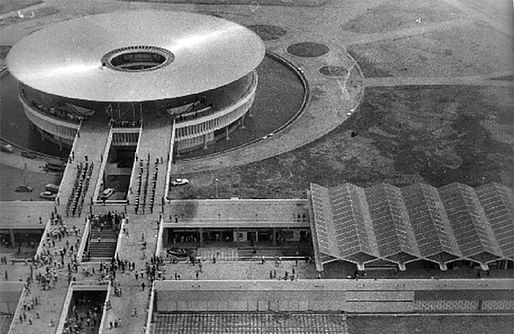
History and Theory Award winner: Lukasz Stanek, The University of Manchester for "Architecture in global socialism: Eastern Europe, West Africa, and the Middle East in the Cold War"
Project excerpt: "In the course of the Cold War, architects, planners, and construction companies from socialist Eastern Europe collaborated with those in West Africa and the Middle East in order to bring modernisation to the developing world. This research is the first to study their work, and to show how it was mobilised within global networks of cooperation established by socialist countries, or what I call “socialist worldmaking”. The resulting monograph (2020) shows how the collaboration between socialist and postcolonial countries reshaped five cities: Accra (Ghana), Lagos (Nigeria), Baghdad (Iraq), Abu Dhabi (United Arab Emirates), and Kuwait City (Kuwait) between the 1950s and the 1980s. Local authorities in these cities drew on Soviet prefabrication systems, Hungarian and Polish planning methods, Yugoslav and Bulgarian construction materials, Romanian and East German standard designs, as well as professionals from across Eastern Europe. In some countries, including Ghana in the 1960s, modern architecture from Eastern Europe was instrumental in the adaptation of the socialist development model to tropical conditions. Other countries, such as 1970s Nigeria, invited state-socialist companies to stimulate competition between foreign enterprises. In North Africa and the Middle East, governments and architects exploited the differences between socialist foreign trade and the emerging global construction market during the closing decades of the Cold War. By focusing on their work, this study inscribes socialist worldmaking into a more complex and antagonistic genealogy of architecture’s globalisation. Carried out between 2009 and 2019, this research draws on public and private archives on four continents, interviews, and fieldwork. It combines close readings of case studies with distant readings of large collections of data, studied and evidenced by means of digital tools. This research challenges inherited visions of global urbanisation and its architecture, and offers their new understanding for historians of architecture, planning, and construction, historians of the Cold War, as well as practitioners and educators." — Read more
COMMENDATIONS
Climate Change: Cole Roskam, University of Hong Kong (Hong Kong) for "Constructing climate: The Hong Kong Observatory and meteorological networks within the British imperial sphere, 1842-1912"
Cities and Community: Alex Young Il Seo, University of Cambridge (UK) for "Constructing frontier villages: human habitation in the South Korean borderlands after the Korean War"
History and Theory: Jingru (Cyan) Cheng, Royal College of Art (UK) for "Alternative modernism: the architecture of China's people's commune"
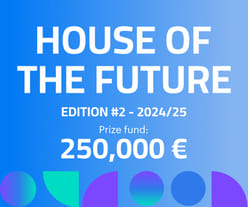
250,000 € Prize / HOUSE OF THE FUTURE 2024/25
Register by Wed, Apr 30, 2025
Submit by Mon, Jun 2, 2025

Kinderspace: Architecture for Children's Development #2
Register by Thu, Jan 16, 2025
Submit by Mon, Jun 16, 2025

Land Art Generator Initiative 2025 Fiji: Climate Resilience for Island Communities
Register/Submit by Mon, May 5, 2025
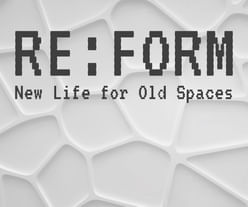
Re:Form – New Life for Old Spaces
Register by Wed, Jan 22, 2025
Submit by Tue, Sep 2, 2025
No Comments